This hurricane in a jar experiment is a super fun and simple way to teach kids about how hurricanes form! Not only will kids learn a lot during this great STEM activity, but they will love it so much they will beg to do it again and again!
Find more fun Weather Experiments for Kids here!
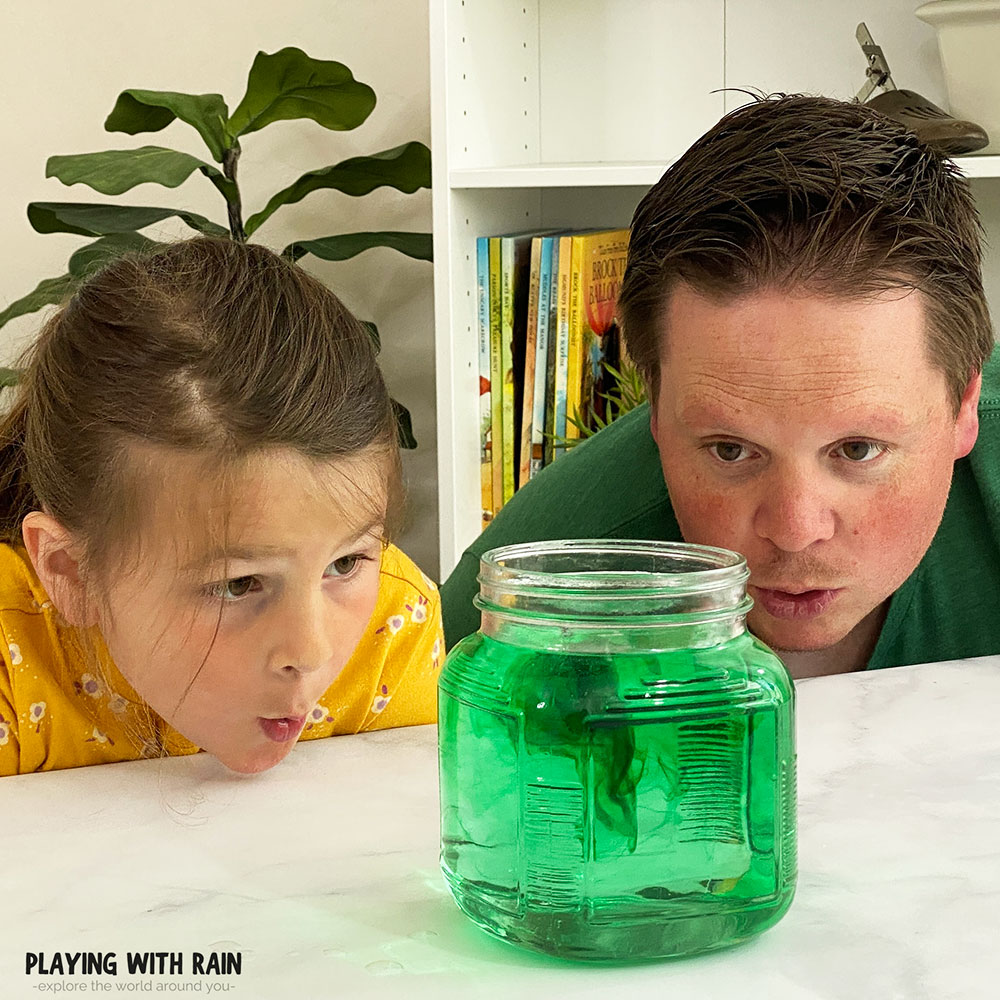
One of my favorite things about this method of making a swirling hurricane in water is how simple it is to do at home with household supplies!
Hurricane In A Jar
This post may contain affiliate links. As an Amazon Associate, I earn from qualifying purchases.
Supplies Needed:
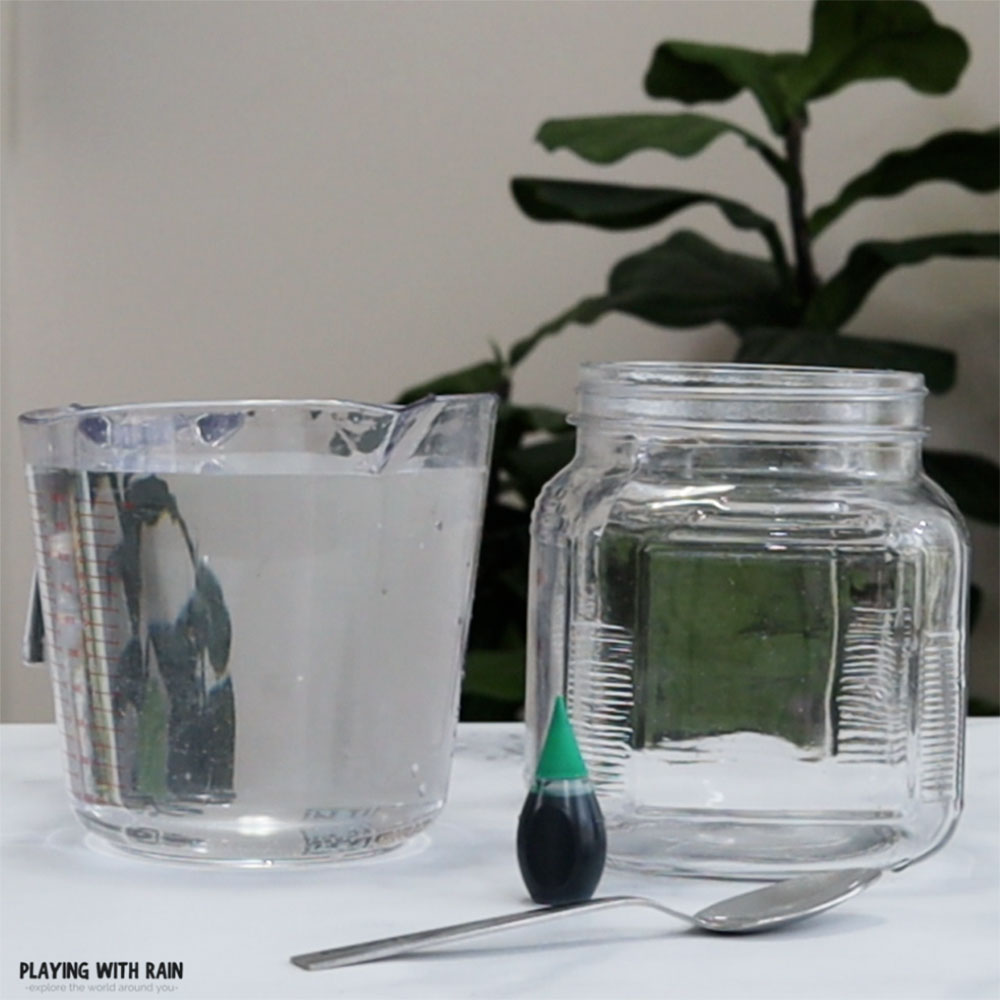
How To Make A Hurricane In A Jar
- Fill a wide-mouth jar with water.
- Stir the water in a circular motion.
- Drop some food coloring into the center of the water.
- Watch a hurricane swirl in the jar.
Step 1: Fill A Wide-Mouth Jar With Water
Find a jar that has a very large opening at the top. You can also use a large bowl for this activity too!
Then fill the jar with water until the water level is about an inch away from the top of the jar.
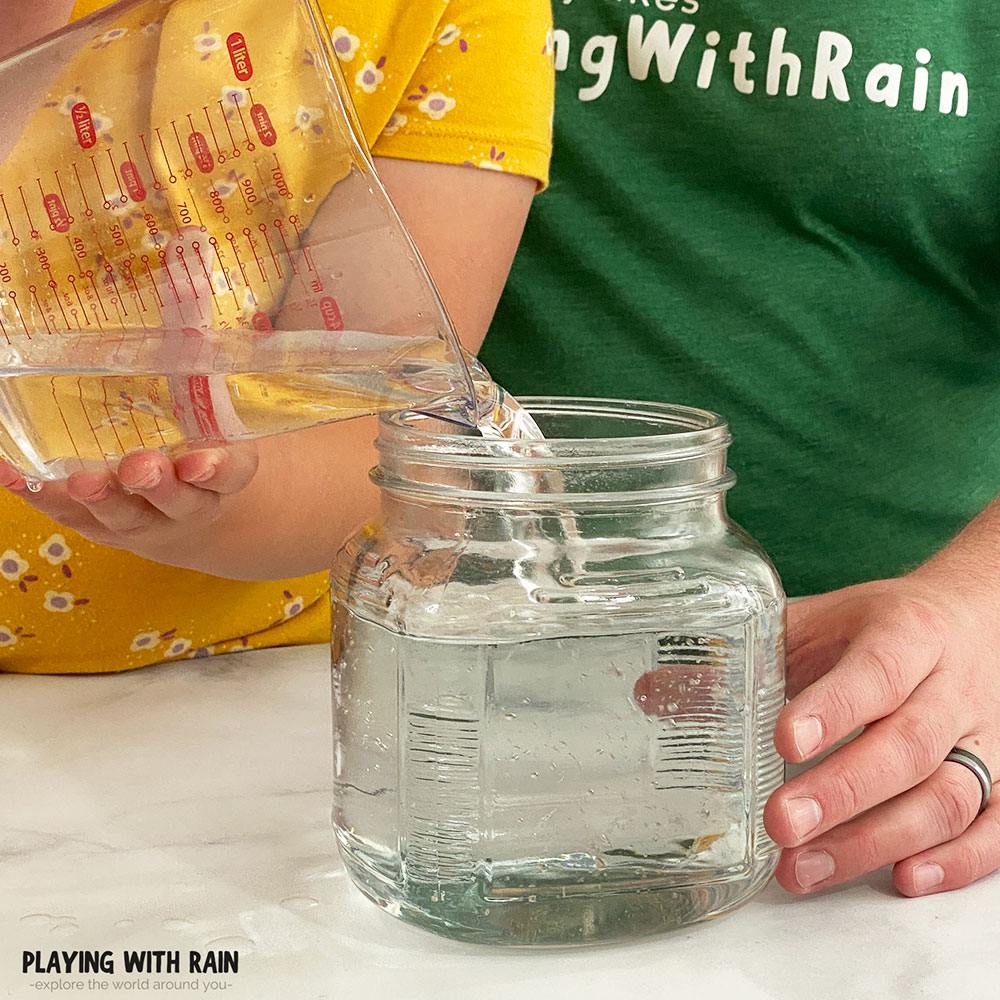
Step 2: Stir The Water In A Circular Motion
Now use a spoon to stir the water inside the jar. The goal of stirring the water is get the water spinning in a fast circular motion.
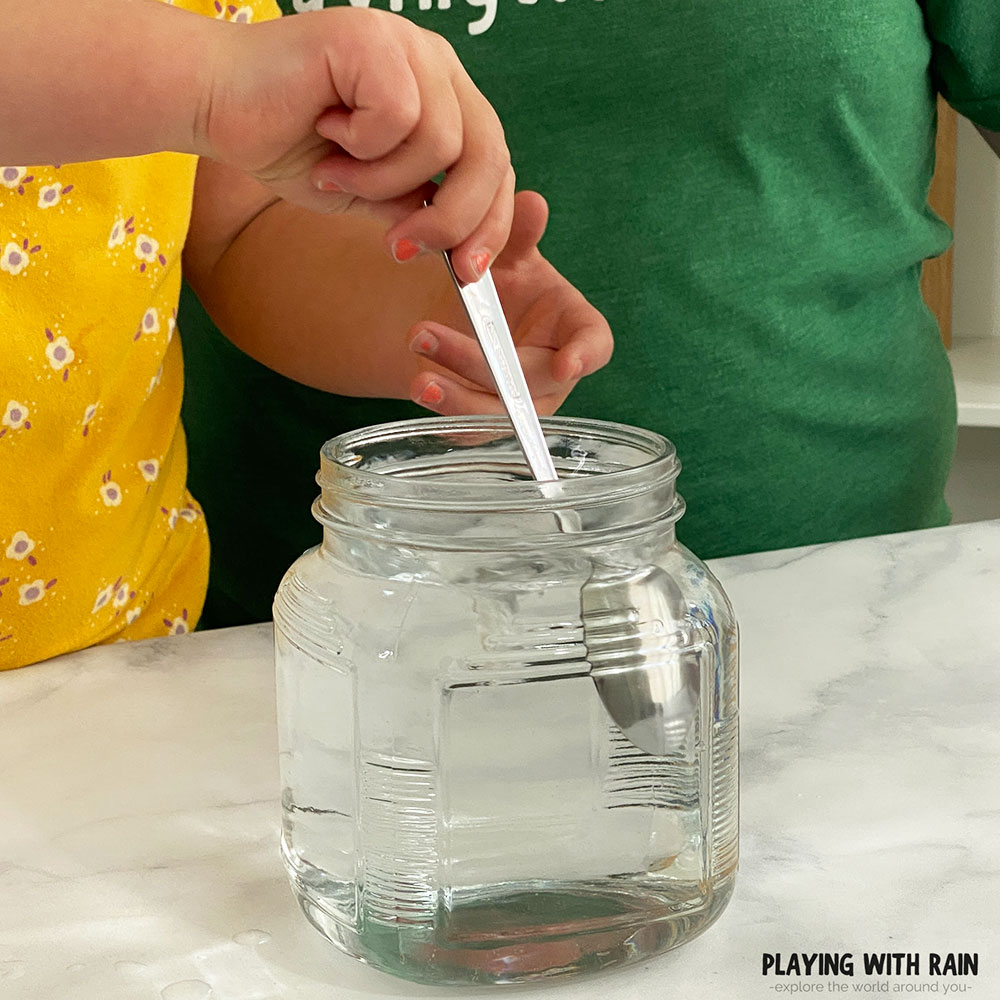
The spinning and circulating water inside the jar will represent the strong circulation around a hurricane!
Step 3: Drop Some Food Coloring Into The Center Of The Water
Remove the spoon once you have created a strong whirlpool-like circulation in the water.
Then place a few drops of food coloring into the top center of the water.
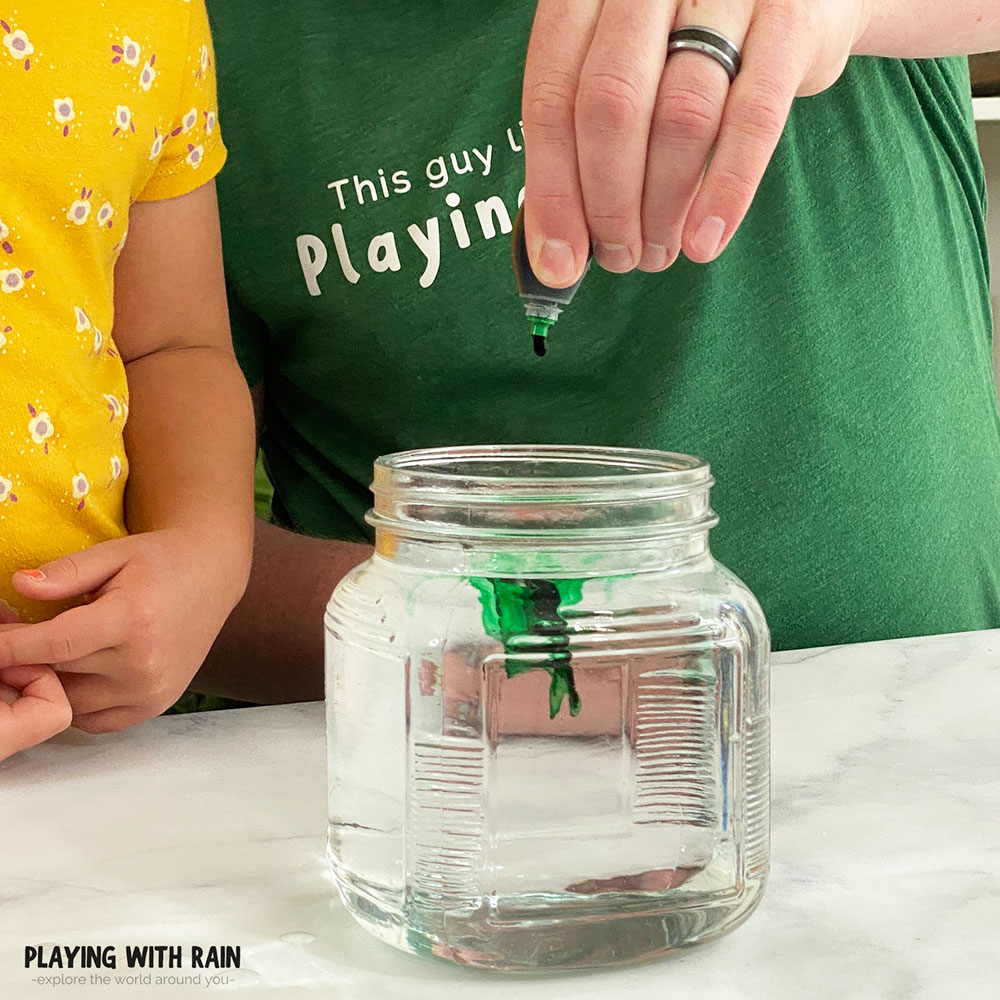
We decided to use green coloring, but you can make a hurricane in a jar with whatever color you want!
Step 4: Watch A Hurricane Swirl In The Jar
When the coloring is placed in the center of the spinning water, the circulation will keep the darkest, most concentrated colors near the center.
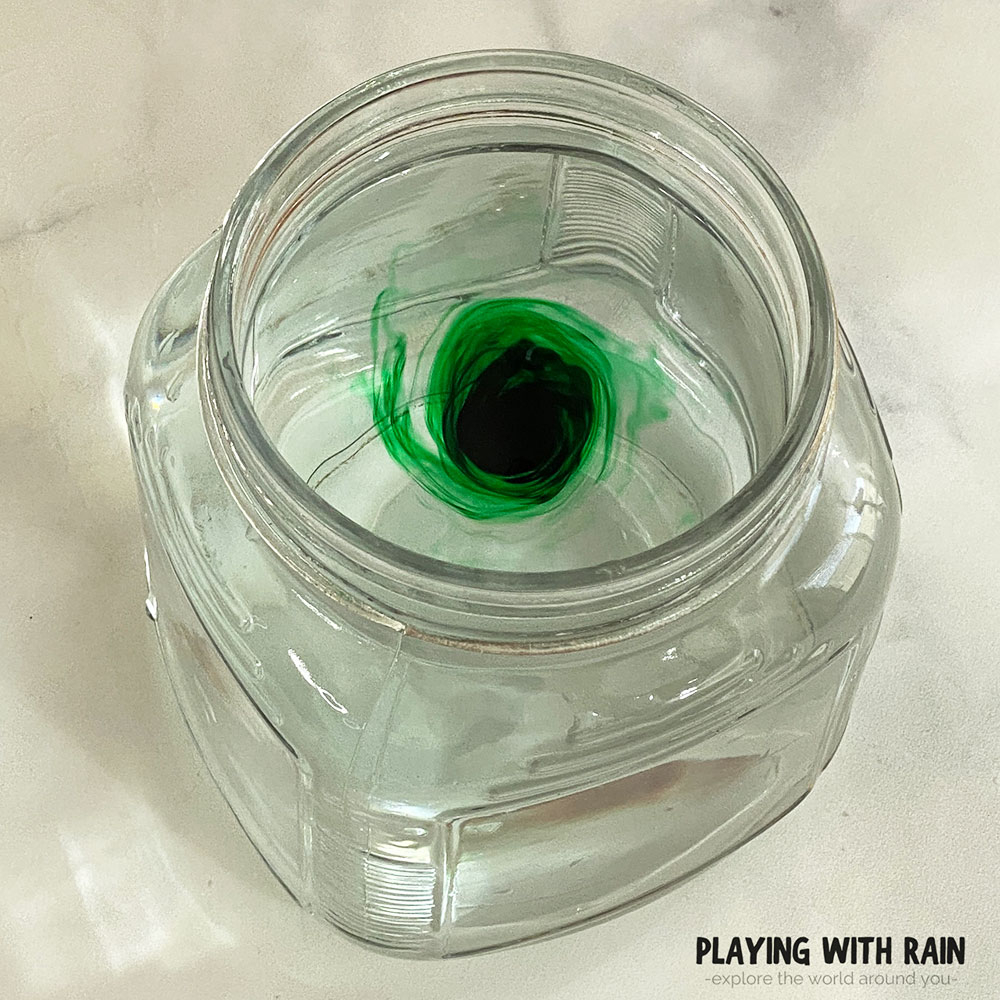
But eventually the color will begin to spread out from the center circulation in the form of lighter colored bands.
From the top view of the water, it looks like a hurricane radar or satellite image you would see on TV for a real hurricane!

It’s really cool to look through the side of the jar too and see the really strong center circulation pulling the color down into the water!
This is very similar to our Tornado Experiment, but in the real world hurricanes can be hundreds of miles wide and tornadoes are usually less than one mile wide!
What Do Hurricanes Need To Form?
There are 4 main ingredients that a hurricane needs to grow into a strong storm.
- A large area of very warm ocean water that is at least 79°F or warmer.
- A lot of very warm, moist air rising off the ocean surface.
- An area of low pressure near the center of the storm.
- Light winds outside of the storm to steer the storm, but not disrupt its circulation.
In our hurricane in a jar experiment, the outer bands of a hurricane are much weaker and represented by the lighter colors in the water.
But closer to the center the colors are much darker representing the strongest part of the hurricane, known as the eyewall of the hurricane.
The eyewall of a hurricane is where the strongest winds always occur.
The eyewall wraps around the eye, or center of the hurricane, where the winds are actually completely calm!
The winds are calm in the center of the hurricane because this is the center of the low pressure.
All of the wind around the storm gets pulled horizontally into the center and in the center, the air rises vertically up into the storm.
The strongest sustained winds speed ever recorded inside a hurricane was a whopping 215 mph when hurricane hunters flew into Hurricane Patricia on October 23, 2015.
Where Do Cyclones Form?
Tropical cyclones typically form between 5° and 30° North and South of the Equator.
They cannot form directly over the equator though, because the Earth’s Coriolis Force is not strong enough there to give a cyclone the spinning circulation that it needs to grow!
PIN THIS EXPERIMENT FOR LATER
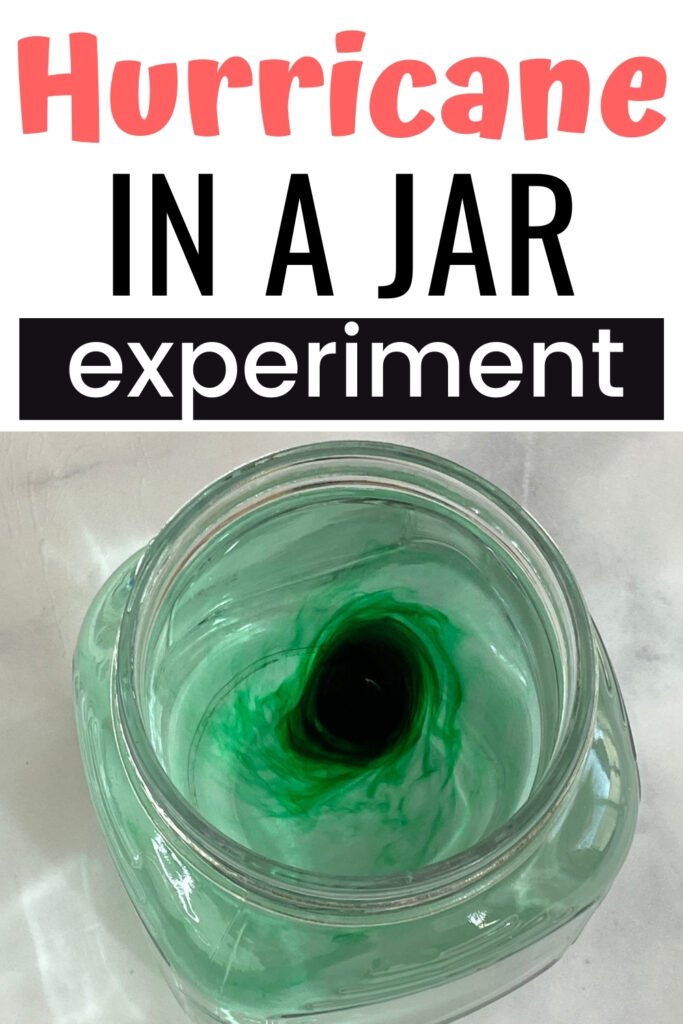
That’s a cool experiment! Enjoyed watching!